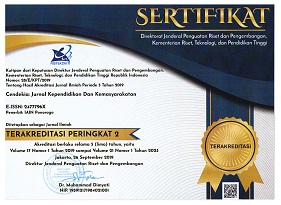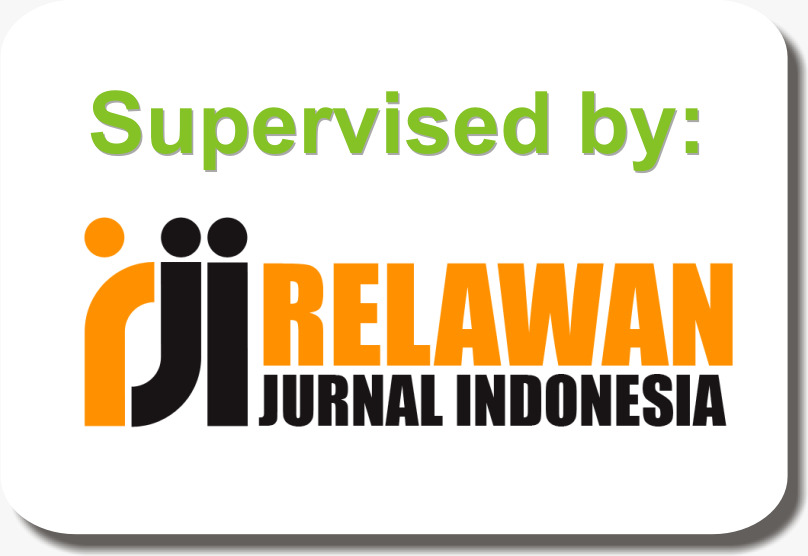
Retraction & Correction
Policy Statement
We understand that the authors have worked carefully preparing manuscripts, and we have carried out peer-review processes. However, sometimes, there is the potential for published articles to be withdrawn or deleted for scientific reasons. It should not be done lightly and can only occur under extraordinary circumstances. Therefore, corrections, clarifications, retractions, and apologies, when needed, will be carried out with strict standards to maintain confidence in the authority of its electronic archives. Our commitment and policy are to maintain the integrity and completeness of critical scientific records for researchers' and librarians' archives.
Article Retraction
Cendekia: Jurnal Kependidikan dan Kemasyarakatan is committed to playing its part in maintaining the integrity of the scholarly record; therefore, it is necessary to retract articles occasionally. Articles may be retracted if:
- There is a significant scientific error that would invalidate the article's conclusions, for example, where there is clear evidence that findings are unreliable due to misconduct (e.g., data fabrication) or honest error (e.g., miscalculation or experimental error).
- The findings have previously been published elsewhere without proper cross-referencing, permission, or justification (i.e., cases of redundant publication).
- There are ethical issues such as plagiarism (appropriating another person's ideas, processes, results, or words without giving appropriate credit, including those obtained through confidential review of others' manuscripts) or inappropriate authorship.
To ensure that retractions are handled according to publication best practices and following COPE retraction guidelines, Cendekia: Jurnal Kependidikan dan Kemasyarakatan adopts the following retraction process:
- An article requiring potential retraction is brought to the journal editor's attention.
- The journal editor should follow the step-by-step guidelines according to the COPE flowcharts (including evaluating a response from the article's author in question).
- Before any action is taken, the editor's findings should be sent to the Ethics Advisory Board. The purpose of this step is to ensure a consistent approach in accordance with industry best practices.
- The final decision on whether to retract is then communicated to the author and, if necessary, any other relevant bodies, such as the author's institution, on occasion.
- The retraction statement is then posted online and published in the next available issue of the journal (see below for more details of this step).
Note that if authors retain the copyright for an article, this does not mean they automatically have the right to retract it after publication. The integrity of the published scientific record is paramount, and COPE’s Retraction Guidelines still apply in such cases.
Article Correction
Cendekia: Jurnal Kependidikan dan Kemasyarakatan should consider issuing a correction if:
- A small part of an otherwise reliable publication reports flawed data or proves misleading, especially if this results from honest error.
- The Author or Contributor list is incorrect (e.g., a deserving author has been omitted, or someone who does not meet authorship criteria has been included).
Corrections to peer-reviewed content fall into one of three categories:
- Publisher correction (erratum): to notify readers of a critical error made by publishing/journal staff (usually a production error) that has a negative impact on the publication record, the scientific integrity of the article, or the reputation of the Authors or the journal.
- Author correction (corrigendum): to notify readers of a significant error made by the Authors that negatively impacts the publication record, the scientific integrity of the article, or the reputation of the Authors or the journal.
- Addendum: an addition to the article by its Authors to explain inconsistencies, expand the existing work, or otherwise explain or update the information in the main work.
The decision of whether a correction should be issued is made by a journal's Editor(s), sometimes with advice from Reviewers or Editorial Board members. Handling Editors will contact the paper's authors with a request for clarification, but the final decision about whether a correction is required and which type rests with the editors.
Article Removal
Removing a published article from our online platform may be necessary in a few cases. This will only happen if an article is defamatory or infringes others’ legal rights, or where the article is, or we have good reason to expect that it will be, the subject of a court order, or where the article, if acted upon, may pose a serious health risk. In such circumstances, while the article's metadata (i.e., title and author information) will be retained, the text will be replaced with a screen indicating that the article has been removed for legal reasons.
Article Replacement
In cases where an article, if acted upon, may pose a serious health risk, the original paper's authors may wish to retract the flawed original and replace it with a corrected version. Under such circumstances, the above procedures for retraction will be followed with the difference that the article retraction notice will contain a link to the corrected re-published article and a history of the document.
















